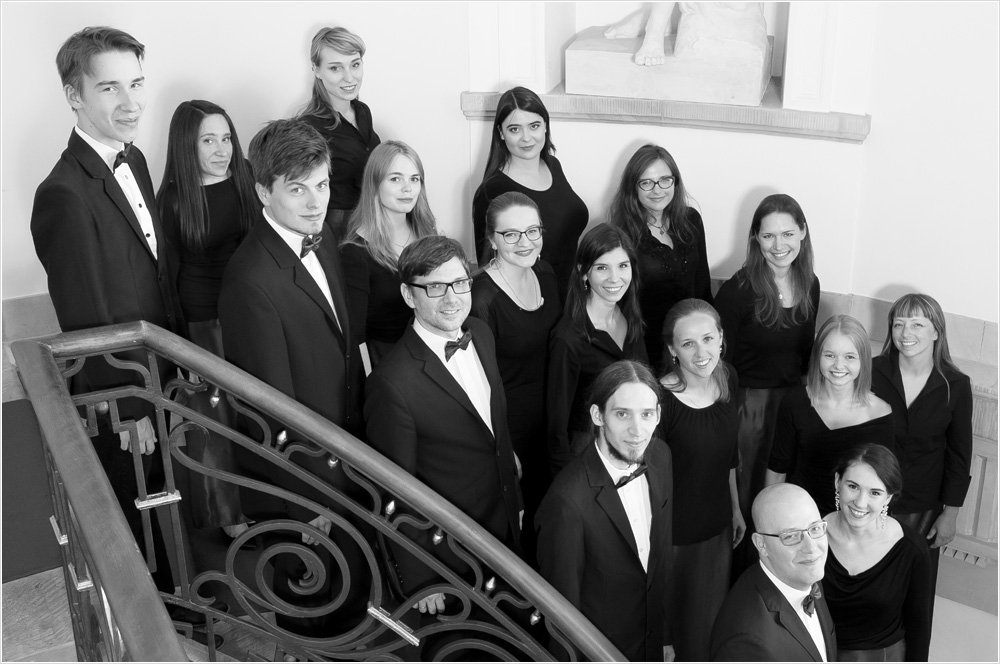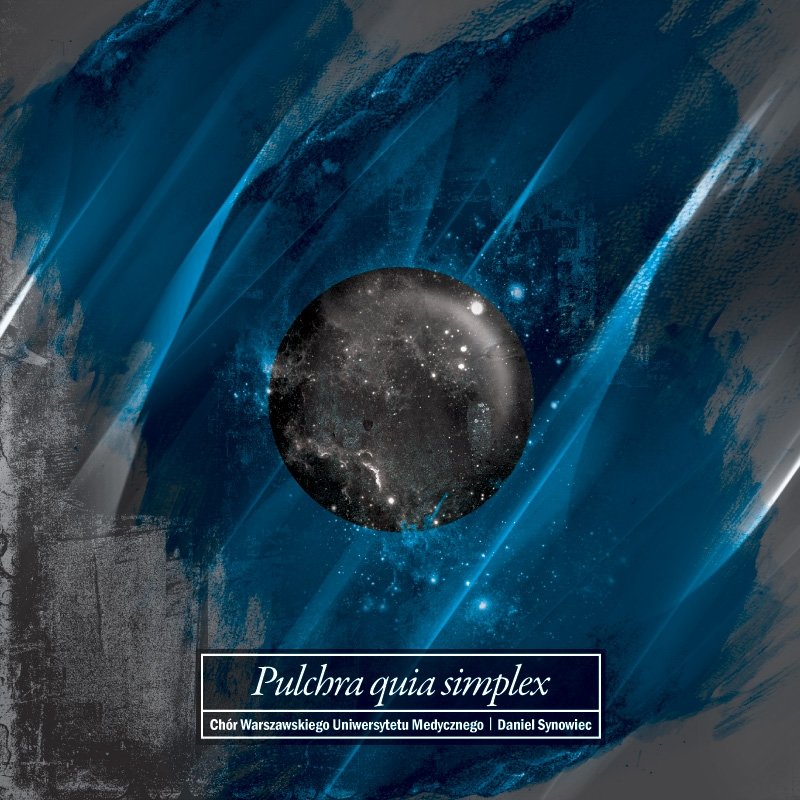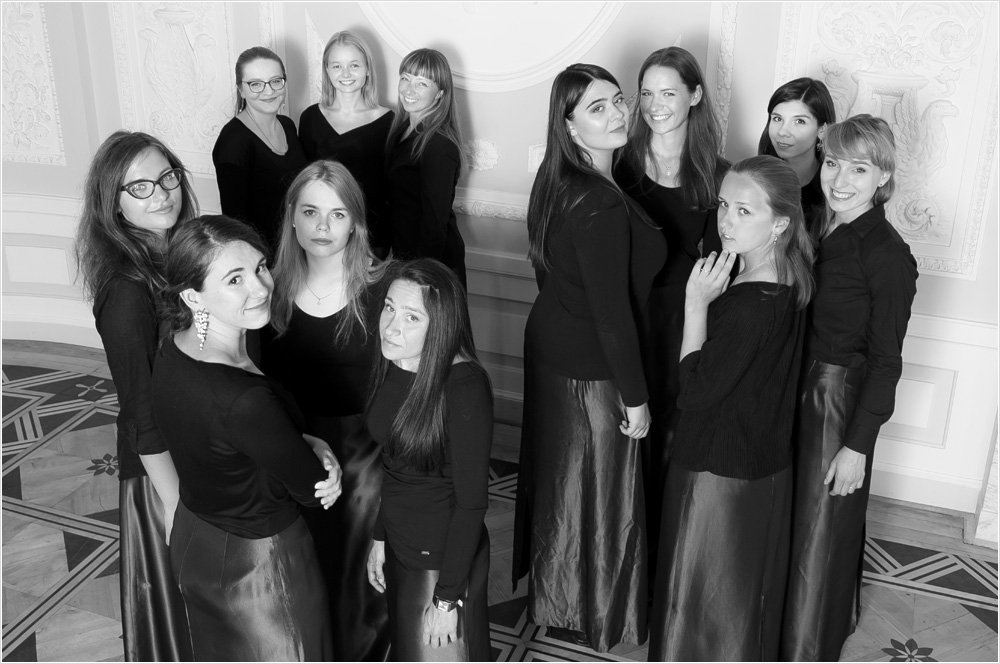The first four songs tell about God's love, revealed in the eternal Word, which became Body and lived among us. In The Lamb, John Tavener used the famous poem by William Blake, in which the narrator asks rhetorical questions to the animal: Who created you? Who gives you food? Who gave you such a beautiful voice that makes you proud of the pastures? In the following, the narrator describes himself as a child and recalls that the Savior became both a child and a lamb, and therefore the whole creation is named after him. The reference to the Christian tradition (Lamb of God) is obvious and characteristic of Blake's literature. Based on it, Tavener, using techniques typical of polyphonic music (such as inversion, augmentation), created an elaborate work. The original version of the song is for a mixed choir, arranged for a female choir by Barry Ross. Patrick Hawes’ Angelus Domini celebrates the Annunciation, while Ave Maria II Rihards Dubra’s celebrates the angel's greeting, which is accompanied by a request for the intercession of the Mother of God. Rihard Dubra’s ceremonial Felix namque es ... is a kind of summary of the whole block. Mary is described as the most worthy of all glory, because she gave birth to the One who is the "Sun of Justice".
The next three songs have a purely jubilatory character, express the joy of life and the love of man for the Creator and all creation. Laudate Dominum of the Spanish composer and doctor Javier Busto uses the words of Psalm 117, while Karl Jenkins’ “I'll make music” is a compilation of fragments of Deuteronomy, First Book of Chronicles and Psalm 144. Motet was originally part of a larger, symphonic form ("Gloria"), arrangement for mixed choir, however, is the work of the author himself. One of Romuald Twardowski's most popular and recognizable choral compositions is Alleluia, sung almost all over the world. This CD contains the version for the female choir. The second block ends with A Clare benediction by John Rutter, who in addition to music also wrote the words of this short prayer.

The song Northern Lights, nostalgic on the one hand and very impulsive on the other, was created by Ola Gjeilo for various compositions. He dedicated the version for the female choir to the group "Elektra Women’s Choir". The work is maintained in a convention that can be described as post-Romantic. At the same time, the composer's fascination with Gregorian chant is heard. The text was borrowed from the Old Testament book - “Song of Songs”. In the relationship of the lover to the beloved, exegetes see the relationship of Christ to the community of the Church.
The love thread is the perfect bridge to the last block - 3 songs (all in an outstanding arrangement by Kirby Shaw), although secular, but most in line with the topic. They deal with interpersonal relationships. The song When I fall in love was created in the early 1950s. Its authors are Victor Young (music) and Edward Heyman (words), and one of the first performers was the then-known actress Doris Day. However, the song owes its popularity to the interpretation of the legendary duo Nat King Cole and his daughter Nathalie. My funny Valentine comes from the musical "Babes in arms". Music to the words of Lorenz Hart was written by Richards Rodgers in 1937. The title Valentine - because we are talking about a man here - is not an ideal person: unphotogenic, with crooked lips, a bit irregular and maybe not the most intelligent, but it is this imperfection that makes him a (loved) man, a "favorite work of art", which should remain unchanged. Today the song is not only a hymn of lovers, but also a real masterpiece of the so-called "Modern jazz". It was performed by hundreds of artists from the unforgettable Cottage Baker to Matt Damon (in the film "Talented Mr. Ripley"). Eric Clapton created the ballad Tears in heaven together with Will Jennings after the tragic death of his four-year-old son. The pain sung in it, however, does not obscure hope: the author knows that he must show strength, can not give up, he also believes in reunion with the child in another, better world, where there will be no more tears. The song in which the living person communicates with the beyond, ideally sums up a number of previous compositions. The circle closes, eternity penetrates the present, bringing peace and relief.
I was wondering how to show the beauty of simplicity from an executive point of view. In addition to the deliberate selection of the repertoire, I focused on a dozen or so small, chamber cast of the choir and on juxtaposing songs for a mixed band with songs for a female choir. I hope that Pulchra quia simplex will also be an opportunity for reflection and rest for you.
Daniel Synowiec
WUM Choir
Consists of a dozen or so people, largely students and graduates of the Medical University of Warsaw. The team is closely connected with its university and the city of Warsaw. For her own Alma Mater she performs up to 30 concerts and musical settings of university celebrations annually in places such as the National Philharmonic, the Royal Castle, the Porczyński Gallery and the "Kamienica" Theater. In addition to university activities, the choir gives concerts at home and abroad, promoting contemporary Polish music. The band's repertoire ranges from early music masterpieces to the arrangements of contemporary light music pieces. Since 2009, the choir has been conducted by Daniel Synowiec.
Tracklist
- John Tavener arr. Barry Ross – The Lamb
- Patrick Hawes – Angelus Domini
- Rihards Dubra – Ave Maria II
- Rihards Dubra – Felix namque es…
- Javier Busto – Laudate Dominum
- Karl Jenkins – I’ll Make Music
- Romuald Twardowski – Alleluja
- John Rutter – A Clare Benediction
- Ola Gjeilo – Northern Lights
- Victor Young arr. Kirby Shaw – When I Fall in Love
- Richard Rodgers arr. Kirby Shaw – My funny Valentine
- Eric Clapton, Will Jennings arr. Kirby Shaw – Tears in heaven
Performers
- Medical University of Warsaw Choir
- Daniel Synowiec: conductor
Produkcja
- Joanna Popowicz, Antoni Grzymała: sound directing
- Joanna Popowicz (1–5, 7, 8, 12) Antoni Grzymała (6, 11), Agata Golusińska (9) Ewa Wrzesińska (10): editing of recordings
- Antoni Grzymała: mastering
- Michał Teperek: photography
- John Comber: lyrics translation
- Łukasz Pawlak: concept and graphic design




